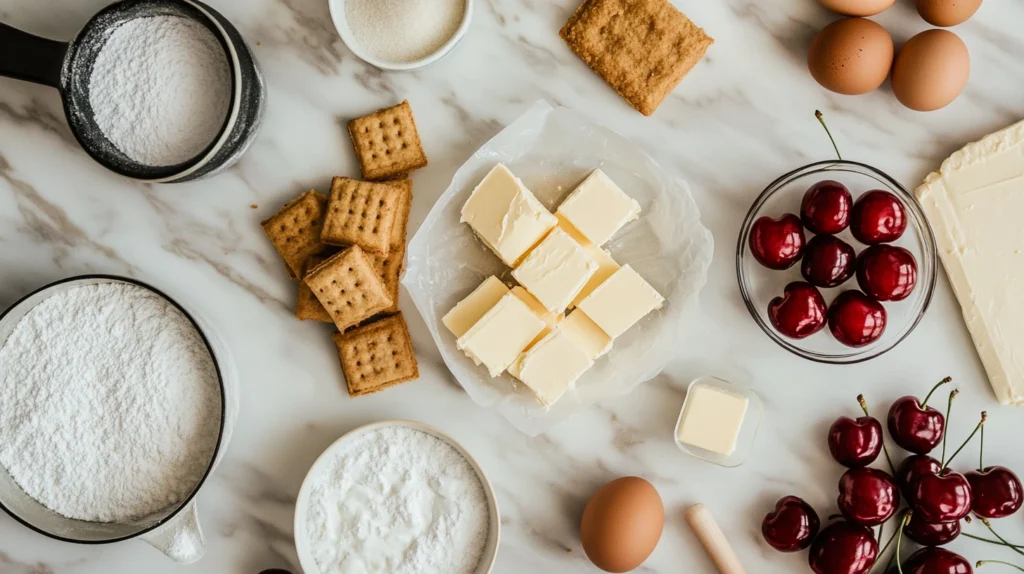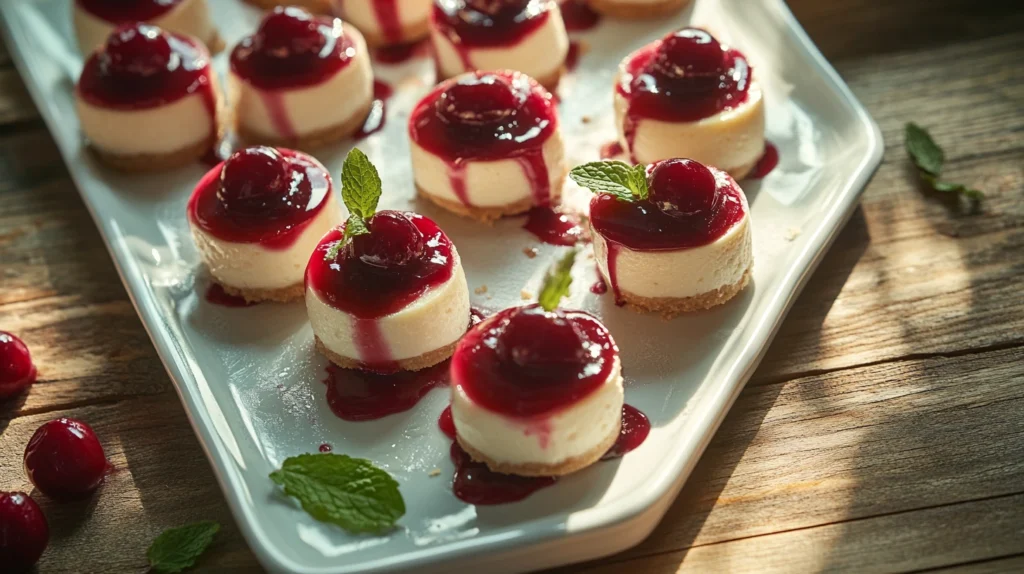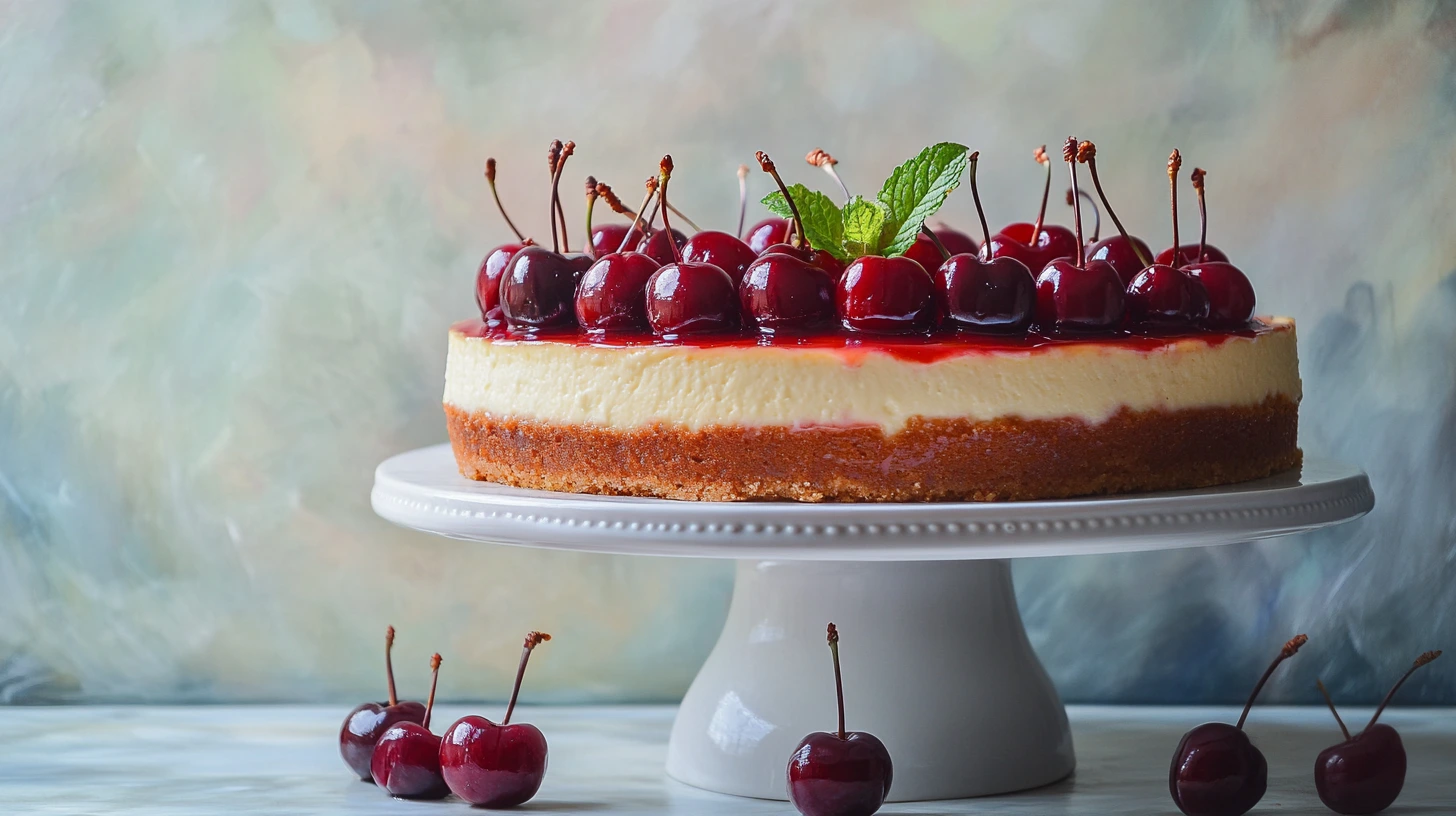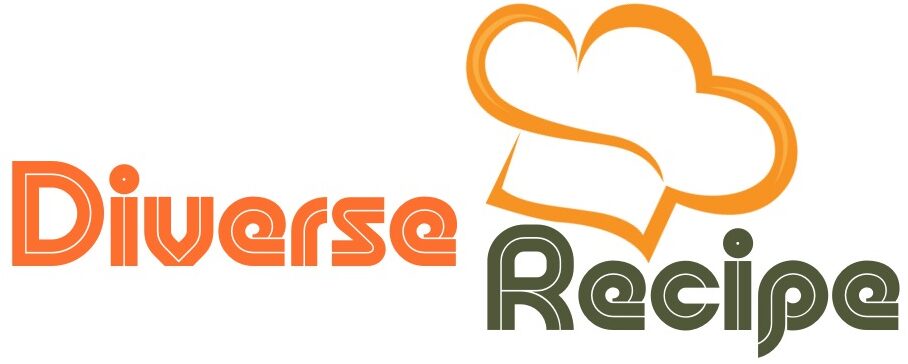Cherry cheesecake is a classic dessert loved for its irresistible combination of textures and flavors. To begin with, the buttery crust, creamy filling, and luscious cherry topping create a symphony of tastes that can elevate any occasion, whether it’s a casual gathering or a formal dinner. Moreover, whether baked to perfection or prepared in a no-bake style, cherry cheesecake is versatile, visually stunning, and simply delicious.
In this guide, you will learn everything you need to know to make the perfect cherry cheesecake. First, we will cover selecting the best ingredients. Next, we’ll dive into mastering the techniques for both baked and no-bake versions, so you’ll have all the tools to create a dessert that impresses family and friends. Additionally, we’ll explore tips to avoid common mistakes, variations to suit dietary preferences, and answers to frequently asked questions. By the end, you’ll feel confident crafting a cherry cheesecake that’s as delightful to make as it is to eat.
Ingredients Needed for the Perfect Cherry Cheesecake Recipe
A successful cherry cheesecake starts with the right ingredients. Here’s what you’ll need for each layer: the crust, filling, and topping.

For the Crust:
- Graham crackers crumbs (1 ½ cups): For a classic, slightly sweet base.
- Unsalted butter (⅓ cup, melted): Helps bind the crust and adds richness.
- Granulated sugar (2 tablespoons): Enhances the flavor of the crust.
For the Filling:
- Cream cheese (24 ounces, softened): The star ingredient for a smooth and creamy texture.
- Granulated sugar (1 cup): Adds sweetness to balance the tang of the cream cheese.
- Sour cream (¾ cup): Enhances the creaminess and adds a tangy depth of flavor.
- Vanilla extract (1 teaspoon): Adds warmth and complexity.
- Eggs (3 large): To bind the filling together.
For the Topping:
- Cherry pie filling (1 can, 21 ounces): A convenient option for a sweet and tangy topping.
- Fresh cherries (optional, for garnish): Adds freshness and visual appeal.
- Lemon juice (1 teaspoon, optional): To enhance the flavor of the cherry topping.
This carefully curated list ensures every layer of your cheesecake contributes to the overall flavor and texture. Each ingredient serves a specific purpose, from the buttery crunch of the crust to the rich creaminess of the filling and the vibrant sweetness of the topping.
Step-by-Step Guide to Making a Cherry Cheesecake Recipe
Creating a cherry cheesecake involves crafting three distinct layers: the crust, the filling, and the topping. To begin, gather all your ingredients and ensure they are at room temperature. Once you’re ready, follow these steps carefully to ensure a flawless dessert. First, you’ll prepare the crust, which serves as the foundation of your cheesecake. Next, you’ll move on to the filling, where most of the magic happens. Finally, the topping adds the perfect finishing touch, tying all the flavors together beautifully.
Preparing the Crust
The crust forms the foundation of your cheesecake, offering a crunchy contrast to the creamy filling.
- Crush the Graham Crackers: Place 1 ½ cups of graham crackers in a food processor and blend until fine crumbs form. Alternatively, use a rolling pin to crush the crackers inside a resealable bag.
- Mix the Ingredients: Combine the graham cracker crumbs, 2 tablespoons of granulated sugar, and ⅓ cup of melted unsalted butter in a mixing bowl. Stir until the mixture resembles wet sand.
- Press into the Pan: Pour the mixture into a 9-inch springform pan. Use the back of a spoon or the bottom of a flat glass to press it evenly along the bottom and slightly up the sides.
- Bake (Optional): For a firmer crust, preheat the oven to 325°F (160°C) and bake the crust for 8-10 minutes. Let it cool before adding the filling. Skip this step for a no-bake cheesecake.
Making the Filling
The filling is the heart of the cheesecake, rich and velvety smooth.
- Soften the Cream Cheese: Ensure your cream cheese is at room temperature to avoid lumps. Beat 24 ounces of cream cheese in a large mixing bowl until smooth and creamy.
- Add Sugar and Sour Cream: Gradually add 1 cup of granulated sugar and ¾ cup of sour cream. Beat until fully incorporated, scraping down the sides of the bowl as needed.
- Mix in the Vanilla: Add 1 teaspoon of vanilla extract for a hint of sweetness and depth.
- Incorporate the Eggs: Add 3 large eggs, one at a time, mixing on low speed after each addition. Avoid overmixing, as this can introduce air bubbles that may cause cracks during baking.
Creating the Cherry Topping
The topping adds a sweet, fruity burst of flavor and a stunning visual element.
- Use Cherry Pie Filling: Open a can of cherry pie filling and stir in 1 teaspoon of lemon juice (optional) to enhance its brightness.
- Fresh Option: If you prefer, cook 2 cups of fresh cherries with ⅓ cup of sugar and 2 tablespoons of water over medium heat until the cherries soften and the mixture thickens. Let it cool completely before using.
Assembling the Cheesecake
Now it’s time to bring all the layers together.
- Pour the Filling: Transfer the cheesecake filling into the prepared crust, spreading it evenly with a spatula.
- Bake the Cheesecake: Preheat the oven to 325°F (160°C). Place the springform pan in a larger roasting pan and pour hot water into the roasting pan until it reaches halfway up the sides of the springform pan. Bake for 55-65 minutes, or until the edges are set and the center jiggles slightly.
- Cool the Cheesecake: Turn off the oven, crack the door open, and let the cheesecake cool gradually for 1 hour. Remove it from the water bath and cool to room temperature.
- Chill: Refrigerate the cheesecake for at least 4 hours or overnight for the best texture.
- Add the Topping: Spoon the cherry topping over the chilled cheesecake, spreading it evenly. Garnish with fresh cherries if desired.
Cherry Cheesecake Recipe: Baking vs. No-Bake Options
Cherry cheesecake can be prepared in two popular styles: the traditional baked version and the no-bake version. Each method has its unique advantages and caters to different preferences and occasions. Here’s a detailed look at both approaches.
Traditional Baked Cheesecake
A baked cherry cheesecake has a rich, dense texture and a classic flavor that many dessert lovers adore. Baking the cheesecake involves a few key steps to achieve that perfect creamy consistency.
- Preparation for Baking:
- Preheat the oven to 325°F (160°C).
- Assemble your cheesecake as per the crust and filling instructions.
- To ensure even baking and prevent cracking, use a water bath. Wrap the outside of your springform pan with two layers of aluminum foil to protect it from water leakage, then place it inside a larger roasting pan. Fill the roasting pan with hot water until it reaches halfway up the sides of the springform pan.
- Baking Time:
- Bake the cheesecake for 55-65 minutes. The edges should appear set, while the center should have a slight jiggle when gently shaken.
- Avoid overbaking as it can result in a dry texture and cracks on the surface.
- Cooling and Chilling:
- Allow the cheesecake to cool gradually in the oven with the door slightly ajar for about an hour.
- Transfer it to the counter to cool to room temperature, then refrigerate for at least 4 hours or overnight to let the flavors meld and the texture firm up.
No-Bake Cherry Cheesecake
The no-bake version is quicker and simpler to prepare, making it ideal for those short on time or without access to an oven. This method also yields a lighter and silkier cheesecake.
- Preparing the Crust:
- Follow the same steps to create the graham cracker crust but skip the baking step. Instead, chill the crust in the refrigerator for about 30 minutes to allow it to set.
- Making the Filling:
- Instead of eggs, the no-bake filling typically uses a stabilizer such as whipped cream, gelatin, or cream cheese to achieve the desired texture.
- Whip 1 cup of heavy cream to stiff peaks, then gently fold it into the cream cheese mixture to create a light and airy filling.
- Chilling the Cheesecake:
- Pour the filling into the prepared crust and smooth the top with a spatula.
- Refrigerate the cheesecake for at least 4-6 hours or overnight to ensure it sets properly.
- Adding the Cherry Topping:
- Once the filling has set, spread the cherry topping evenly over the surface, garnish as desired, and serve.
Which Option is Right for You?
- Choose the baked version if you prefer a dense, traditional cheesecake with a slightly caramelized crust and deeper flavor.
- Opt for the no-bake version if you need a quicker preparation method or want a lighter, mousse-like texture that’s perfect for summer gatherings.
By understanding the differences between these methods, you can tailor your cherry cheesecake to suit your preferences or the occasion. Both versions promise a dessert that’s as delightful as it is delicious!
Tips for the Perfect Cherry Cheesecake
Making a cherry cheesecake that’s as stunning as it is delicious requires attention to detail and a few expert tips. Whether you’re a seasoned baker or a beginner, these suggestions will help you achieve a flawless dessert.
Avoiding Cracks in Baked Cheesecake
Cracks are a common issue in baked cheesecakes, but they’re entirely avoidable with the right techniques:
- Don’t Overmix the Batter: Mixing introduces air bubbles, which can cause the cheesecake to rise unevenly and crack as it cools. Use low speed when incorporating eggs into the batter.
- Use a Water Bath: Baking your cheesecake in a water bath helps regulate the temperature, ensuring even baking and reducing the likelihood of cracks.
- Avoid Overbaking: Check for doneness by gently shaking the pan—only the center should jiggle slightly. Residual heat will finish cooking it as it cools.
- Cool Gradually: Sudden temperature changes can lead to cracks. Let the cheesecake cool in the oven with the door slightly ajar for an hour before transferring it to room temperature.
Choosing the Right Cherries
The quality of your cherries greatly influences the flavor of the topping:
- Fresh Cherries: Ideal for a homemade topping, fresh cherries offer vibrant flavor and texture. Use seasonal cherries for the best results.
- Canned Cherry Pie Filling: Convenient and delicious, canned filling is a time-saver. Enhance its flavor by adding a splash of lemon juice or almond extract.
- Frozen Cherries: A good alternative to fresh cherries. Thaw and drain them before cooking to prevent excess moisture.
Chilling and Serving
Proper chilling is crucial for both baked and no-bake cheesecakes to achieve the desired texture:
- Refrigeration Time: Chill your cheesecake for at least 4 hours, but overnight chilling yields the best results. This allows the flavors to meld and the layers to firm up.
- Cutting Clean Slices: Use a sharp knife dipped in hot water, wiping it clean between cuts for neat slices.
- Serving Suggestions: Serve chilled with a dollop of whipped cream, fresh cherries, or a drizzle of chocolate for added indulgence.
Enhancing the Flavor Profile
Take your cherry cheesecake to the next level with these flavor-boosting ideas:
- Add Almond Extract: A hint of almond extract pairs beautifully with cherries, enhancing their natural sweetness.
- Infuse the Filling: Swirl a bit of cherry puree or jam into the cream cheese filling for a marbled effect and extra flavor.
- Experiment with Citrus: Add a tablespoon of lemon or orange zest to the filling for a tangy twist.
Common Mistakes to Avoid
- Skipping the Room Temperature Step: Always use room-temperature cream cheese and eggs for a smoother batter.
- Forgetting to Line the Pan: To prevent sticking, grease your pan or line the bottom with parchment paper.
- Rushing the Cooling Process: Never place a hot cheesecake directly into the refrigerator, as it can cause condensation and sogginess.
With these tips in hand, your cherry cheesecake will not only taste amazing but also look like a masterpiece.
Variations of Cherry Cheesecake
Cherry cheesecake is a versatile dessert that can be easily customized to suit various dietary needs, serving sizes, and flavor preferences. For example, it can be adapted to include unique ingredients or alternative methods. Moreover, there are many exciting variations to explore, each offering a delightful twist on the classic recipe. Whether you prefer a traditional version or something more creative, there’s a cherry cheesecake for everyone.
Mini Cherry Cheesecakes
Perfect for individual servings, mini cheesecakes are great for parties or portion control.
- Ingredients: Use the same crust, filling, and topping ingredients as the traditional recipe, but divide them into a muffin tin lined with paper or silicone cupcake liners.
- Preparation: Press about 1 tablespoon of the crust mixture into the bottom of each liner. Add a scoop of the cheesecake filling on top, leaving a small space for the cherry topping.
- Baking: Bake at 325°F (160°C) for 18-22 minutes, or until the centers are slightly set. Allow them to cool and top each mini cheesecake with a spoonful of cherry topping.
- Serving: These bite-sized delights are easy to serve and require no slicing, making them a crowd-pleaser.

Vegan Cherry Cheesecake
This plant-based version is creamy, delicious, and perfect for those avoiding dairy or eggs.
- Crust: Use crushed vegan graham crackers mixed with coconut oil as a base.
- Filling: Blend soaked cashews, coconut cream, maple syrup, and lemon juice for a rich and creamy filling. You can also add a bit of vanilla extract for extra flavor.
- Topping: Use fresh cherries cooked with a touch of sugar and cornstarch to create a vegan-friendly topping.
- No-Bake Option: This version doesn’t require baking. Simply chill the assembled cheesecake in the refrigerator for 4-6 hours or until firm.
Gluten-Free Cherry Cheesecake
For those with gluten sensitivities, this gluten-free version ensures everyone can enjoy a slice.
- Crust: Replace graham crackers with gluten-free alternatives such as almond flour, oat flour, or gluten-free cookies. Combine with melted butter and press into the pan.
- Filling: The filling remains the same as the traditional recipe, as cream cheese and eggs are naturally gluten-free.
- Topping: Ensure the cherry pie filling or any other topping used is labeled gluten-free, as some canned versions may contain gluten as a thickener.
Chocolate Cherry Cheesecake
For chocolate lovers, this variation combines the richness of chocolate with the sweetness of cherries.
- Crust: Mix crushed chocolate cookies or Oreos with melted butter for a decadent base.
- Filling: Add ½ cup of melted dark chocolate to the cheesecake filling before incorporating the eggs.
- Topping: Top the cheesecake with cherry pie filling and a drizzle of melted chocolate for an indulgent touch.
Cherry Cheesecake Bars
Transform the classic cheesecake into portable bars, perfect for picnics and casual gatherings.
- Crust: Press the crust mixture into a rectangular baking dish.
- Filling: Spread the cheesecake filling evenly over the crust.
- Topping: Swirl the cherry topping into the filling with a toothpick for a marbled effect.
- Baking and Cutting: Bake as you would a traditional cheesecake, then cut into squares once cooled and chilled.
Keto Cherry Cheesecake
A low-carb version for those following a ketogenic diet.
- Crust: Replace graham crackers with almond flour mixed with melted butter and a touch of stevia or erythritol.
- Filling: Use full-fat cream cheese, heavy cream, and a keto-friendly sweetener like monk fruit or erythritol.
- Topping: Create a low-carb topping by simmering fresh cherries with a keto-approved sweetener and a pinch of xanthan gum for thickening.
These variations prove that cherry cheesecake is adaptable to any occasion or dietary requirement. Each version retains the dessert’s signature flavor while adding unique elements to surprise and delight.
Variations to Try
- Mini Cheesecakes: Perfect for parties, just like these Lemon Cookies that are great for individual servings.
- Chocolate Cherry Cheesecake: Add melted dark chocolate to the filling for a decadent twist. Pair it with ideas from the White Pizza Recipe for a unique dinner-dessert combo.
- Vegan Option: Replace cream cheese with blended cashews and coconut cream for a plant-based version. For inspiration, you could repurpose ideas from this Leftover Rotisserie Chicken Recipe for ingredient substitutions.
Frequently Asked Questions
What is the secret to making good cheesecake?
The secret to making a good cheesecake lies in attention to detail and a few key practices. Firstly, use room-temperature ingredients like cream cheese, eggs, and sour cream to create a smooth batter that avoids lumps. Additionally, avoid overmixing the batter, as overmixing can incorporate too much air, which may lead to cracks or a dense texture. Instead, mix the ingredients just until combined. Moreover, baking the cheesecake in a water bath ensures even cooking and prevents the top from cracking by regulating the temperature. In contrast to rushing the process, gradual cooling is essential. Allow the cheesecake to cool in the oven with the door slightly ajar before bringing it to room temperature. This prevents sudden temperature changes that can cause cracks. Finally, chilling time is crucial. Refrigerate the cheesecake for at least 4-6 hours, or overnight, to let the flavors develop fully and the texture set perfectly.
What is the difference between New York style cheesecake and regular cheesecake?
The difference between New York-style cheesecake and regular cheesecake lies in their ingredients, texture, and richness.
Richness: New York style is known for its ultra-rich and dense texture due to the heavy use of cream cheese and extra egg yolks. In contrast, regular cheesecake is lighter and less dense, often made with a mix of cream cheese, sour cream, or other dairy products.
Ingredients: New York style typically incorporates heavy cream or sour cream for added richness. On the other hand, regular cheesecake may use a wider variety of ingredients, such as ricotta or mascarpone, and doesn’t rely as heavily on cream cheese.
Cooking Method: New York style is often baked at a high temperature first, then at a lower temperature, creating a caramelized top. Regular cheesecake is baked at a consistent temperature or even prepared as a no-bake dessert.
Taste: New York style tends to be tangier and more decadent. Regular cheesecake, however, is lighter and often sweeter, with more flavor variations.
Is sour cream or heavy cream better for cheesecake?
Both sour cream and heavy cream have their benefits, and the choice depends on the texture and flavor you want for your cherry cheesecake recipe. Sour cream adds a tangy flavor and a creamy texture, making it ideal for a cherry cheesecake recipe where you want a slight tang and softer, creamier consistency, such as classic and New York-style variations. Heavy cream contributes to a richer, silkier texture and balances the tang of the cream cheese, making it perfect for a smooth and velvety cherry cheesecake recipe. Some recipes for cherry cheesecake use both sour cream and heavy cream to balance richness and tanginess while maintaining the perfect texture in the final dessert.
What does adding an extra egg to cheesecake do?
Adding an extra egg to a cherry cheesecake recipe can significantly affect its texture. Creamier Texture: Eggs act as a binder and add creaminess to the cheesecake, making the texture smoother and denser. More Structure: The additional egg will provide more structure, which may make the cheesecake slightly firmer and less likely to fall apart when sliced. Potential Drawback: Adding too many eggs to a cherry cheesecake recipe can cause the cheesecake to rise more during baking and then sink or crack as it cools. Be mindful of balancing the recipe. When preparing your cherry cheesecake recipe, an extra egg can enhance creaminess and stability but should be used carefully to avoid compromising the texture.
Conclusion
Cherry cheesecake is more than just a dessert; it’s a timeless classic that combines rich, creamy textures with the sweet and tangy flavors of cherries. This cherry cheesecake recipe is perfect for anyone who wants to enjoy a decadent treat at home. Whether you opt for a traditional baked version or a quick no-bake alternative, the layers of buttery crust, luscious filling, and vibrant topping create a treat that is sure to impress.
From choosing the finest ingredients to mastering techniques for perfection, every step in making a cherry cheesecake recipe is an opportunity to infuse love and creativity into your baking. With variations like mini cheesecakes, vegan and keto-friendly options, or even adding chocolate for an indulgent twist, this cherry cheesecake recipe caters to every taste and occasion.
By following the tips shared here, from avoiding cracks to proper storage, you can ensure your cherry cheesecake recipe not only looks stunning but also tastes incredible. Whether you’re serving it at a special event, sharing it with family, or enjoying it solo, this cherry cheesecake recipe is a testament to the joy of home baking. If you’re looking for a foolproof way to create a dessert that everyone will love, this cherry cheesecake recipe is exactly what you need.

Classic Cherry Cheesecake Recipe – Creamy, Rich & Irresistible
Equipment
- 9-inch springform pan
- Mixing bowls (large and medium)
- Electric mixer or stand mixer
- Rubber spatula
- Measuring cups and spoons
- Food processor or rolling pin (for crust)
- Baking sheet
- Aluminum foil
- Cooling rack
- Knife for slicing
Ingredients
- For the Crust:
- 2 cups graham cracker crumbs
- ½ cup 1 stick unsalted butter, melted
- ¼ cup granulated sugar
- For the Cheesecake Filling:
- 3 8 oz packages cream cheese, softened
- 1 cup granulated sugar
- 3 large eggs
- 1 teaspoon vanilla extract
- 1 cup sour cream
- For the Cherry Topping:
- 1 can 21 oz cherry pie filling
Instructions
- Step 1: Prepare the Crust
- Preheat the oven to 325°F (163°C).
- In a medium bowl, mix the graham cracker crumbs, melted butter, and sugar until well combined.
- Press the mixture firmly into the bottom of a 9-inch springform pan, ensuring an even layer.
- Bake for 10 minutes, then remove and let it cool while preparing the filling.
- Step 2: Make the Cheesecake Filling
- In a large mixing bowl, beat the cream cheese and sugar on medium speed until smooth and creamy (about 2 minutes).
- Add eggs one at a time, beating well after each addition.
- Mix in the vanilla extract and sour cream until fully incorporated.
- Pour the cheesecake filling over the cooled crust, smoothing the top with a spatula.
- Step 3: Bake the Cheesecake
- Place a baking sheet filled with hot water on the lower oven rack to prevent cracking.
- Bake the cheesecake for 50-55 minutes, or until the center is slightly jiggly but set.
- Turn off the oven, crack the door open slightly, and let the cheesecake cool inside for 1 hour.
- Transfer to a wire rack and cool completely at room temperature.
- Refrigerate for at least 4 hours or overnight for the best texture.
- Step 4: Add the Cherry Topping & Serve
- Once chilled, spread the cherry pie filling evenly over the top.
- Slice and serve chilled. Enjoy!
Notes
Use a water bath (baking pan with hot water) to minimize cracks in the cheesecake.
Refrigerate leftovers for up to 5 days or freeze for up to 3 months.
Swap cherry pie filling with strawberry, blueberry, or raspberry topping for variety.
